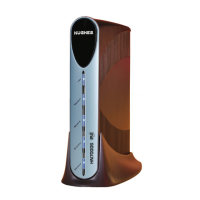Appendix B • Home Networking
1037073-0001 Revision E
97
Basic Ethernet
considerations
Ethernet hubs, cables, and NICs can be purchased at most
computer supply stores or outlets. They are relatively inexpensive
and easy to install. The Ethernet interface must support
auto-negotiate, a feature that enables compatibility and
inter-operability among Ethernet devices.
Select an Ethernet hub based on how many computers or other
devices are connected to the network, and how fast you need the
data connection to be. (In network terminology, each computer
connected to the network is called a host.) You may decide that an
older 10Mbps Ethernet connection meets your needs. However, if
the users on your network share large files or play computer
games, you may wish to install a 100Mbps Ethernet hub. Some
hubs enable the network to use both speeds. A sample Ethernet
LAN is shown in Figure 81.
Cat5 (Category 5) Ethernet cable is the minimum recommended
and supports Fast Ethernet (100Mbps). If you think that the
network or devices on the network may use the recently
developed Gigabit Ethernet (1Gbps) in the future, consider
installing Cat5e Ethernet cable now.
When you install the cable, either run it inside your walls or
secure it to floor baseboards and doorway frames. Never use
staples to secure Ethernet cable. Always leave some slack in the
Figure 81: Site with remote terminal and wired Ethernet LAN
Inroute
Outroute
Antenna
Network
Operations
Center (NOC)
Satellite
Remote terminal
Internet
digital
TM
digital
TM
VAXstation3100
digital
TM
digital
TM
VAXstation3100
PC
Mac
Ethernet hub
or router
G-27604 C
03/10/06

